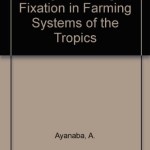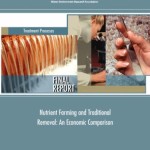
[amzn_product_post]
Read More →
• Practical advice for planning watering zones appropriate to climates and landscape varieties.
• Tips for successful do-it-yourself installation or for planning a system with a professional.
• Complete how-to for installing sprinkler equipment from a variety of manufacturers.
• Illustrated step-by-step instructions, troubleshooting tips, and do-it-yourself hints.
Read More →![Does organic farming benefit biodiversity? [An article from: Biological Conservation]](https://agricultureadvice.com/wp-content/uploads/2014/12/51P1T5EY1VL1-150x150.jpg)
This digital document is a journal article from Biological Conservation, published by Elsevier in 2005. The article is delivered in HTML format and is available in your Amazon.com Media Library immediately after purchase. You can view it with any web browser.
Description:
The intensification and expansion of modern agriculture is amongst the greatest current threats to worldwide biodiversity. Over the last quarter of the 20th century, dramatic declines in both range and abundance of many species associated with farmland have been reported in Europe, leading to growing concern over the sustainability of current intensive farming practices. Purportedly ‘sustainable’ farming systems such as organic farming are now seen by many as a potential solution to this continued loss of biodiversity and receive substantial support in the form of subsidy payments through EU and national government legislation. This paper assesses the impacts on biodiversity of organic farming, relative to conventional agriculture, through a review of comparative studies of the two systems, in order to determine whether it can deliver on the biodiversity benefits its proponents claim. It identifies a wide range of taxa, including birds and mammals, invertebrates and arable flora, that benefit from organic management through increases in abundance and/or species richness. It also highlights three broad management practices (prohibition/reduced use of chemical pesticides and inorganic fertilisers; sympathetic management of non-cropped habitats; and preservation of mixed farming) that are largely intrinsic (but not exclusive) to organic farming, and that are particularly beneficial for farmland wildlife. However, the review also draws attention to four key issues: (1) It remains unclear whether a ‘holistic’ whole-farm approach (i.e. organic) provides greater benefits to biodiversity than carefully targeted prescriptions applied to relatively small areas of cropped and/or non-cropped habitats within conventional agriculture (i.e. agri-environment schemes); (2) Many comparative studies encounter methodological problems, limiting their ability to draw quantitative conclusions; (3) Our knowledge of the impacts of organic farming in pastoral and upland agriculture is limited; (4) There remains a pressing need for longitudinal, system-level studies in order to address these issues and to fill in the gaps in our knowledge of the impacts of organic farming, before a full appraisal of its potential role in biodiversity conservation in agroecosystems can be made.

How to Stay Informed About the Future of Agriculture… Whether you are; – a farmer who wants to stay connected with consumer trends – an agribusiness person interested in where our industry is headed – or a consumer trying to separate hype from truth. I am willing to share what I see out in the field every day. The good news is, I am profoundly optimistic about the ability of agriculture to feed our planet, despite the population growth, because I see what science and technology are doing to improve our food production and because every day I work with dedicated, passionate people who care deeply about agriculture, the world’s most important industry. If you’d like us to help, just send an email to: Trends@AGRI-TREND.com I have a blast on Twitter and hope you follow me @RSaik
Read More →
The purpose of this study was to assess the economic feasibility of using large-scale, restored wetlands to assist publicly owned treatment works (POTWs) in meeting the U.S. Environmental Protection Agency’s (USEPA) recommended criteria for nutrients, specifically, total nitrogen (2.18 mg/l) and total phosphorous (0.076 mg/l). The assessment compares the cost of nutrient control by advanced wastewater treatment technology to that of wetland treatment technology. The comparison was based on several economic factors: annual operating costs, average costs, marginal costs, and present value. To explore the economic relationship between wastewater and treatment wetlands and to quantify the magnitude of wetland area needed, a case study was developed using the seven water reclamation plants (WRPs) owned and operated by the Metropolitan Water Reclamation District of Greater Chicago (MWRDGC) and proposed treatment wetlands located adjacent to the Illinois River in the upper Illinois River watershed. Cost functions for both technologies were developed. Using these functions, the economic characteristics of the two technologies were compared assuming, first, that the USEPA’s proposed nutrient criteria would be enacted as the enforceable water quality standard by the state regulator, and, second, that a less stringent standard would be established (3.0 mg/l TN and 1.0 mg/l TP). However, the USEPA’s phosphorus criterion was modified due to the technical difficulty in achieving an effluent concentration of 0.076 mg/l TP. The more stringent phosphorous criterion was set at 0.5 mg/l TP for this comparison study. To meet the future nutrient criteria, the physical facilities of the seven MWRDGC treatment plants must be upgraded to incorporate biological nutrient removal (BNR) technology. A detailed capital cost analysis for the addition of BNR treatment, specifically the 5-stage Bardenpho (with methanol addition), was performed by the MWRDGC for one of its larger WRPs, Calumet. The capital costs for the other plants were estimated using Calumet’s cost formulas and prorated by the design flows. The operating and maintenance (O&M) costs were estimated to add approximately 50% to those for the conventional treatment currently being employed by MWRDGC. The capital costs for upgrading the seven WRPs with the Bardenpho system has been estimated at $1.6 billion with the total present value cost at $2.5 billion.
Read More →